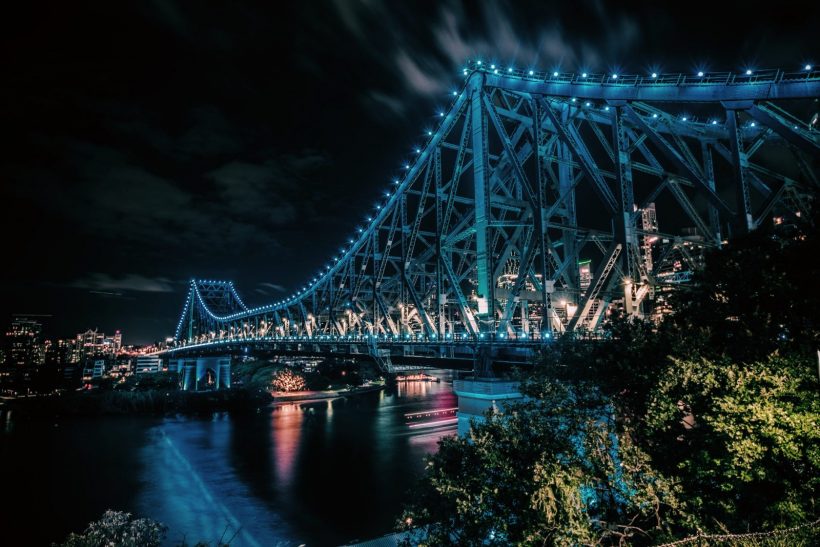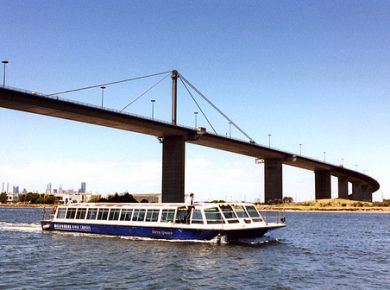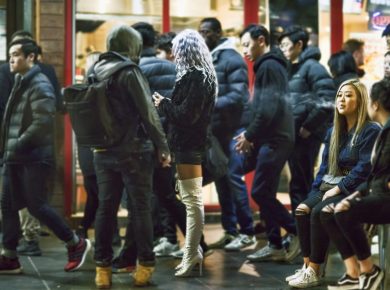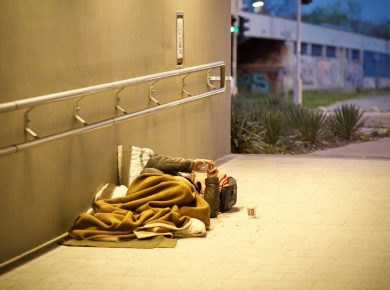Albert Einstein has often been incorrectly quoted as defining ‘insanity’ as doing the same thing over and over again and expecting different results. This is precisely what we are doing with our cities.
Our cities are truly remarkable, complex achievements. They provide an environment for humans to work and thrive in safety, supplied with both the essentials and the creature comforts of modern life. However, any complex structure is at risk from any number of threats. For cities, the pace of population growth and technological change are probably the greatest of such threats, with the potential to undermine our lifestyles and economy. While we in Australia are told on the one hand that our cities are some of the world’s most liveable, articles in our media increasingly focus on our cities’ transport, residential, environmental and infrastructure problems, and experts are always at the ready to issue warnings of doom and gloom.
Our lives are fundamentally influenced by where we live, and for the vast majority of modern Australians this means large cities. The states of South Australia, Western Australia and Victoria all have over 70 per cent of their population in their capital city. New South Wales is not far behind.
According to Infrastructure Australia’s recent paper, Future Cities: Planning for Our Growing Population (2018), Australia’s largest cities are facing a watershed moment in their growth and development. In the coming three decades, the size of the Australian population will grow substantially. Between 2017 and 2046, our population is projected to increase by 11.8 million people. That’s equivalent to adding a new city roughly the size of Canberra each year for the next 30 years. Many of our cities will double. As the report sets out, we will need at least twice as many homes, and there will be, potentially, twice as many trips on our roads and trains. If current trends continue, about 75 per cent of this growth is expected to occur in Sydney, Melbourne, Brisbane and Perth.
This rapid, centralised growth creates highly contentious issues and many pressing questions. There is significant community disquiet in relation to both urban densification and urban sprawl. How can we double the number of homes in our cities if change is so unpopular? If we dislike urban sprawl, tall towers in windswept inner-city areas and increased density in the suburbs, how will we house all of the new residents? What infrastructure do we need and how will we pay for it? Will our cities become less liveable and more dystopian? Will Australian society increasingly become a place of the haves and the have-nots?
The effects of a growing population are already glaringly evident on our roads and public transport systems. As more and more people seek to move into jobs that are overrepresented in the inner parts of our cities, our roads and trains have never been more congested. And yet, much of the often fierce debate between advocates of public transport and dedicated road users misses the point: we know our roads cannot cope with even more traffic, particularly in the inner and middle ring. And yet, in cities like Melbourne, around 75 per cent of all commuter trips are made by car. Only around 10 per cent of commuters go by train. Even if we double our train system over the next 30 years – at huge expense – and the current urban habitation pattern is continued, it won’t touch this ratio, as our population too will have doubled. We will suffer more and more congestion until we start looking at our cities differently.
The ongoing centralisation of growth, both population and economic, is a challenge in its own right. Perth, Adelaide and Melbourne are already disproportionally significant to their state’s economies, and they are further increasing the wealth and opportunity gap between the residents of those cities and their fellow citizens in other parts of those states.
Currently, the desirable inner segments of our major cities are underpinned by high levels of government-subsidised services. These include public transport, cultural and sporting centres, and places of employment and entertainment. Accordingly, property values in the inner areas are skyrocketing, and buying or even renting in the inner suburbs is out of reach for most people. Price escalation in the inner and middle ring of our cities is resulting in significant property cost increases across the whole of the metropolitan area, which is driving many people out of the housing market, putting pressure on rental accommodation and, worst of all, leaving many people homeless. While there is relatively affordable housing on the outskirts of our cities, it can be inconvenient because it is far from many key services and centres of employment. And even this more affordable housing stock remains out of reach for the lower-income members of our community. How can we provide affordable housing for everyone and still get them to work in the morning?
These social and urban trends are beginning to produce visible disparities between different parts of the city. Increasingly, we are becoming a two-tiered society, with well-paid jobs, transport and cultural services benefiting generally well-off inner-city dwellers, while new homebuyers and financially disadvantaged residents in the middle and outer suburbs miss out on those amenities. This is doubly inequitable given all taxpayers provide the funding for major state assets, which, because of their tendency to be located centrally, are generally much more accessible to those who are already advantaged. Our service provision is uneven, and with a burgeoning population this equity distortion can only get worse.
Too much of the current urban debate is based on erroneous assumptions, one of the most significant of which is around the location of employment. We invest huge amounts of scarce resources maintaining the radial transport system in the belief that the CBD is the key to employment in our cities. But this is patently incorrect: inner-city Melbourne, including the CBD, only provides twenty per cent of metropolitan jobs; the rest are scattered across the city, with many local to peoples’ residences. The proportion of central-city employment in Sydney is even lower.
There is much discussion about how big our cities should become, and how we can manage our rapidly changing urban environments – not only those issues that relate to our natural environment and our cities’ sustainability, but also the great challenges that new technology will create over the next couple of decades. Some of these issues are already reasonably well understood, such as the impact of driverless vehicles, while others, such as the growth of artificial intelligence and the changing nature of jobs, are things that we can only partially predict. We need to be better prepared for these futures.
All of these issues must be taken into account when we plan our cities if we are not to exacerbate the problems of congestion, excessive and inefficient spending on infrastructure, and our increasingly two-tiered society. The solution is not to continue building massively expensive new road and rail projects that lead into the centre of our city, so that more and more people can travel to work in the CBD. In fact, the solution is the very opposite: to encourage the growth of businesses and high quality jobs closer to where people live, to move the flow of work and people and vehicles away from the CBD. Currently we do not make optimal use of employment areas in the suburbs. We do not provide enough of the resources and support services for more people to work in the middle and outer rings of our cities. To make these centres into bustling urban hubs of activity they must be well serviced by transport, and they must provide the urban amenity and connectivity that businesses and workers desire.
This is an edited extract from Breaking Point: the Future of Australian Cities (Nero) by Peter Seamer.







